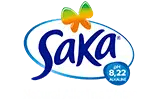In case you missed it, there’s a new trend sweeping the US, which has left converts and health experts divided. As 2017 drew to a close, the ‘raw water’ craze reached new heights, with followers hailing the benefits of unprocessed water.
Despite numerous warnings from leading health experts, concerned about the public health risk of unregulated water sources spreading water-borne disease, raw water devotees claim that it is actually tap water that’s killing us.
What may appear at a glance as a minority movement, is actually gaining traction by the day and becoming big business. It seems the ‘conscious water movement’ well runs deep and is proving lucrative for start-ups keen to have a stake in the action.
With supply struggling to meet rapidly increasing demand, raw water disciples are prepared to part with big bucks for an unprocessed drink. Prices have soared, with benchmark companies charging as much as $37 for a two-gallon ‘orb’ of unprocessed water and boasting sales of up to 900 gallons per day!
Naturally, this has inspired an emergence of new raw water operations popping up around the US. The offerings of companies keen to gain an edge and differentiate themselves from others include bottled unprocessed water, apps which allow members to share ‘self-harvesting’ locations of water sources around the country and even DIY ‘collection systems’, which enable consumers to collect water from the atmosphere surrounding their house.
It may be a stretch to imagine Silicon Valley millennials tapping a keg from their backyard, but it is easy to understand the logic behind this rapidly growing trend.
Live Water founder Mukhande Singh is a strong believer in the power of raw water. “Tap water? You’re drinking toilet water with birth control drugs in them,” he told The New York Times. “Chloramine, and on top of that, they’re putting in fluoride. Call me a conspiracy theorist, but it’s a mind-control drug that has no benefit to our dental health.”
As contentious as his assertions may be, Singh does have a point.
Here in Australia, our own drinking water goes through quite a circuitous procedure before it lands in our glasses. After ‘chemical coagulation’ and filtration has occurred, the disinfection process sees toxic additives, such as chlorine and ammonia, added into the mix.
The water then undergoes a process of fluoridation. Many studies have been done over the controversial chemical fluoride and its presence in drinking water. Harvard University took data from over 27 studies that were carried out for 22 years and linked fluoride exposure to neurological and cognitive function in children. The results were published in The Journal of Environment Health Sciences and concluded that fluoride found in drinking water resulted in lower IQ scored among children.
In a 2007 report, the World Health Organization suggests that water treatment is the accepted practice simply because it is considered the lesser of two evils. It states “chemical contaminants of drinking-water are often considered a lower priority than microbial contaminants because adverse health effects from chemical contaminants are generally associated with long-term exposures, whereas the effects from microbial contaminants are usually immediate. Nonetheless, chemicals in water supplies can cause very serious problems.” In lay terms, this means the government is happy to risk the population’s long-term health, and expose the masses to potentially lethal diseases, to prevent acute illness from contaminated water.
Scary chemical side-effects aside, Singh also makes another valid point about water treatment: “you’re going to get 99 per cent of the bad stuff out, but now you have dead water.” Again, his philosophies are right on the money, in more ways than one.
You see, unprocessed water contains microscopic dissolved minerals, typically found in the rocks from which it originates. It provides your body with essential minerals such as calcium, magnesium and potassium, as well as other health-enhancing elements.
Of course, this only applies to springs which are naturally high in these elements and also low in the bacterium and other impurities
Sadly this is the crux of the problem with the raw water movement; the distinction between ‘natural’ and ‘healthy’. In the US, governance surrounding water quality is lax. Often random checks conducted by inspectors from the Food and Drug Administration brings about the sole assessment of the water and bacteria level measurement. And this only occurs in the operations which happen, by chance, to be selected for audit. Commercial water businesses can trade without quality measures in place and, in many regions, they are not even required to provide a nutritional breakdown on the packaging. There is also no regulation for home-sourced water.
In recent years the World Health Organization has documented alarming data about the high levels of inorganic arsenic in groundwater in many developed countries, including the US.
Dangers of arsenic toxicity include gastrointestinal issues, skin lesions, diabetes, renal failure, cardiovascular disease and even cancer.
Arsenic is just one of many pathogens which can be present in untested water, with E. coli bacteria, viruses, parasites and carcinogenic compounds equally as dangerous.
It seems, when it comes to water, you’re a damned if you go natural, you’re damned if you don’t. Or at least that’s the case for those willing to gamble on unregulated raw water being a healthier choice than the chemical cocktail streaming from their taps.
Luckily for us Aussies, we have the ‘water conscious’ holy grail readily available.
Originating from a protected aquifer source deep in the heart of the remote Koruglu Mountains, Saka Natural Alkaline Water really is living up to its reputation of being the healthiest water in the world.
Saka Water boasts an alkaline composition of 8.2 pH and is packed with essential key minerals, as well as being low in sodium. With such restorative, balanced properties, it’s no wonder Saka Water is offered to consumers 100% natural – nothing added and nothing is taken away. No processing or ionization, no electrolysis, no chemical additives: Saka Water is as pure as nature intended, untouched from source to bottle and has a multi-award-winning smooth taste and comes in various sizes of non-toxic, environmentally-friendly bottles.
In terms of quality control, Saka gets regularly tested by a modern scientific in-house laboratory and is subject to routine government testing. Given the water quality and mineral contents are certified by SGS Fresenius Institute in Germany, additional tests are conducted to maintain endorsement. In addition to all this, Saka Water is randomly tested by Australian Customs as well. Fortunately, Saka always exceeds everyone’s expectations in all levels, being in mineral content, purity or taste.
So the next time you raise a glass of replenishing, chemical-free Saka Water, spare a thought for our neighbours across the sea, who are flinging their wallets blindly at some rather questionable concoctions.
Pure, certified, ‘raw’ water is accessible to health-conscious Aussies literally at the click of a button. No backyard boring required, no need to second mortgage just to cover some exorbitant marketing hype. Just clean, restorative hydration, for as little as $1 for a convenient 330ml bottle.
Cheers; we’ll drink to that!

